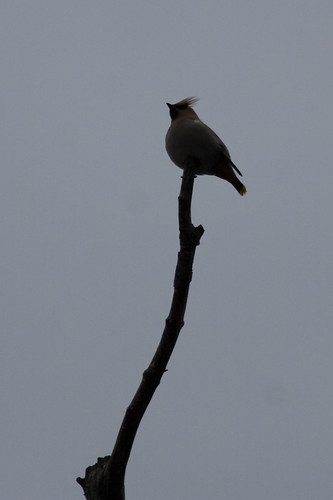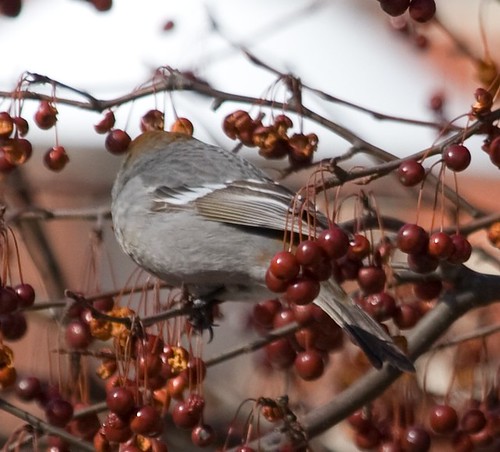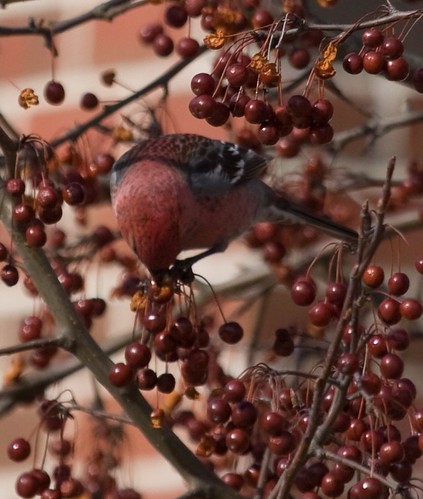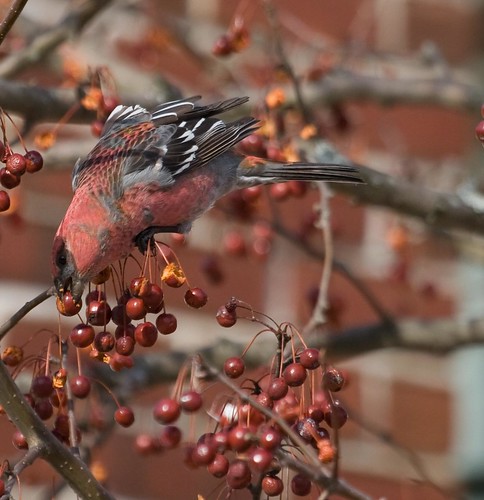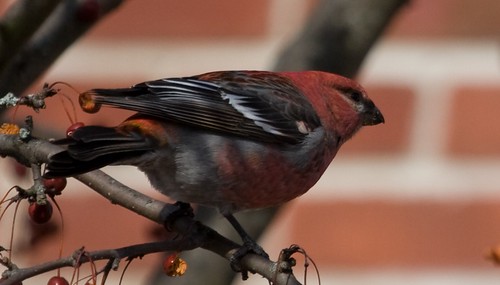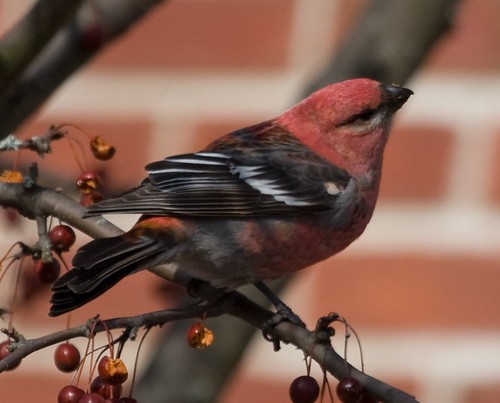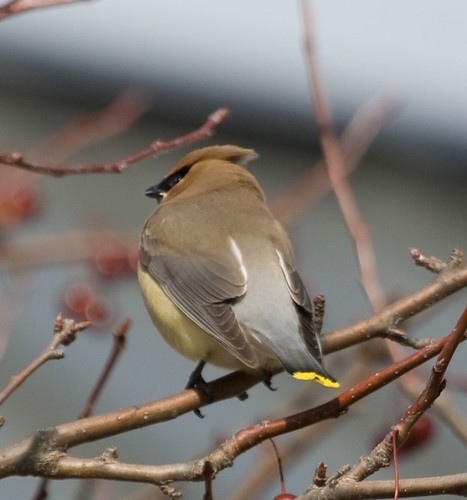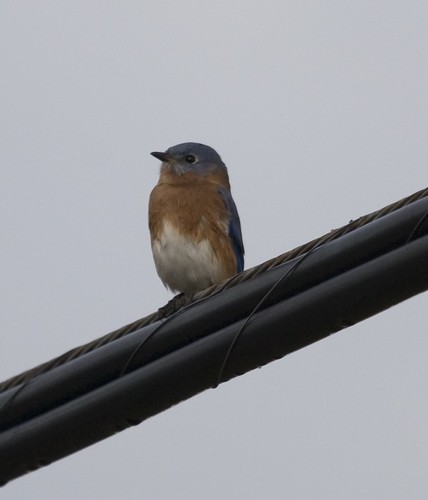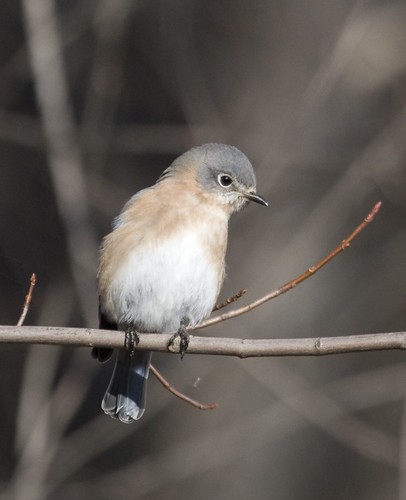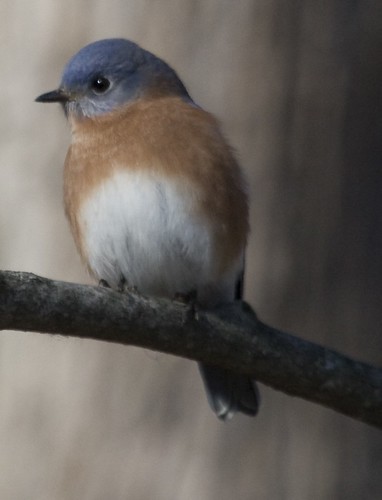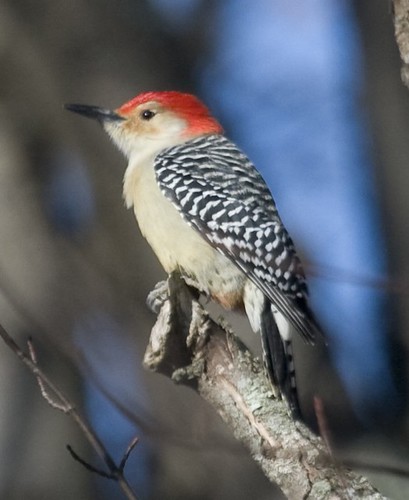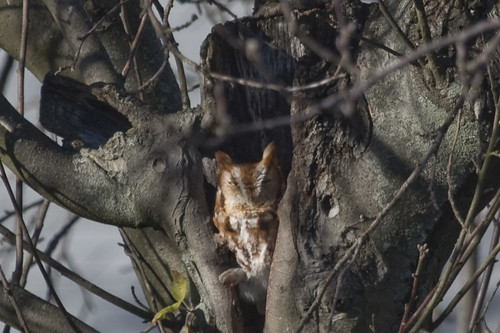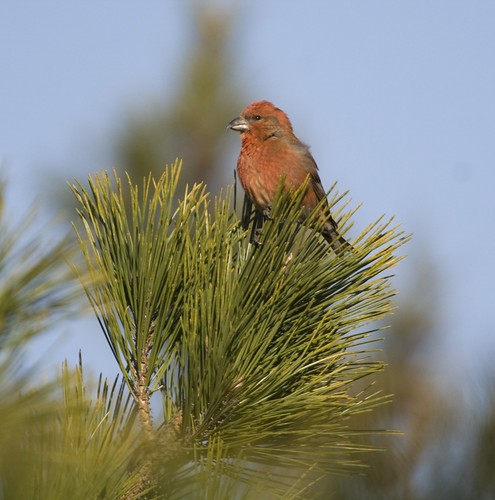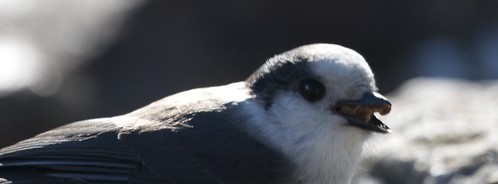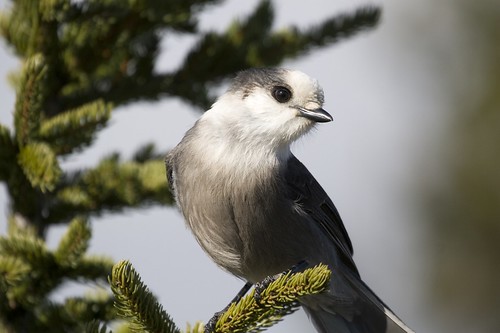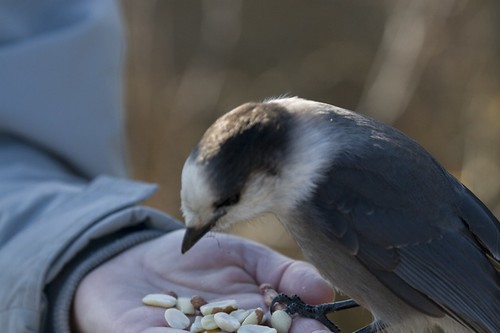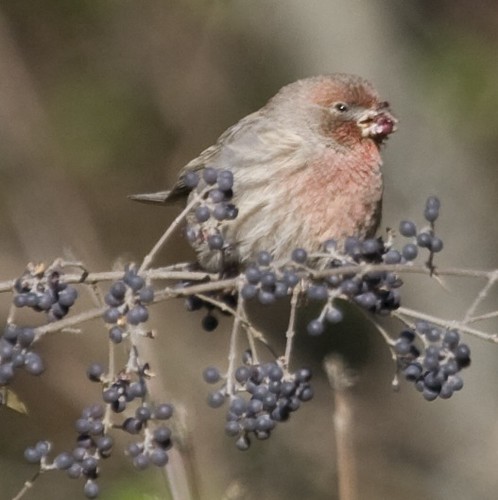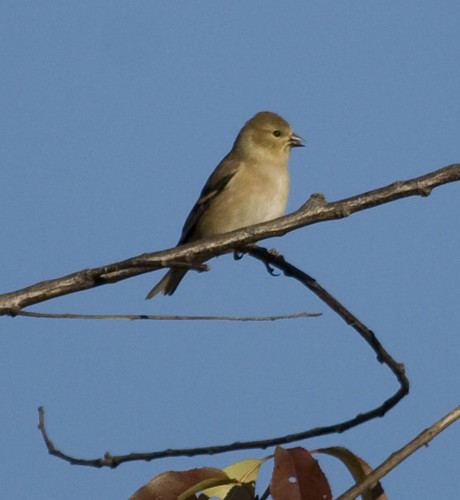Last Sunday was the Greater Boston CBC. Scheduled for 12/16, we were snowed out. Somehow, my team was able to have better attendance on the rescheduled day, unlike most teams. Unfortunately, we were snowed out of several areas and had to replan most of the day.
We started with the usual owling, which turned out to be a waste as we heard nothing. Meeting up with the full team at 7:00, we had a Red-tail replacing last year’s Cooper’s in the same tree. We quickly headed to Dunback, where I found the Great Horned Owl with a little help from the crows. We wandered around the rest of the pines and down to the gardens without much of anything and were ready to move on by 8:45.
Our next stop was Brookhaven, where the nature trail was too snowy. Walking around the parking lot to make sure the pond was frozen, 16 Cedar Waxwings flew by, being chased by a Sharp-shinned Hawk.
We moved on to Falzone Field, which was also too snowy. There were big numbers of robins and mourning doves and what was presumably the same Sharp-shinned landed across the field. Willy the screech owl was out, so we headed over, although he decided to go back into hiding before we got there.
We took a quick detour to check Met State for redpolls and then went to Beaver Brook. There, we found out why we never covered it before. It’s in Belmont’s territory, so we left and went to the UMass Field Station. There was an Accipiter perched that looked like a Cooper’s, but before we could get closer two small white birds flew in. Snow Buntings! My first for Waltham, and only the second record that I know of (also here).
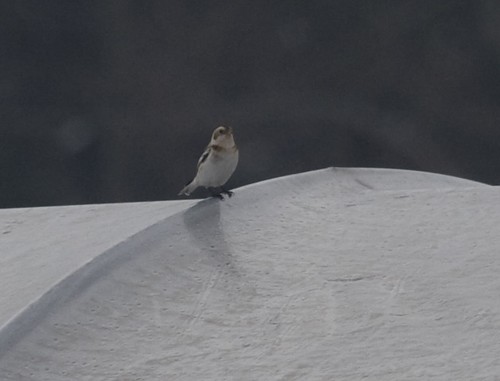
As we started into the field, someone asked about the kestrel the group had here last year. A couple seconds later, we turned around and there was a kestrel sitting on one of the trees behind the building! I headed for the pines to check for owls, while the rest of the group went for a better look for the buntings or to the community gardens. The kestrel flew right overhead. The pines were empty (as always) but the far back corner of the field had a lot of common birds. Walking was rather tough here, sinking in with almost every step.
We moved on to Lyman Pond. Most of the group went to see if the Screech-Owls were back, but I decided to check the pond itself for any open water. There was a small strip, which had a Great Blue Heron and a Mallard. I was about to gloat over the heron, but it flew to the other end and everyone saw it.
Next up was the Paine Estate, which was completely dead. It was close to lunch time, so we headed to the high school and Kennedy. There wasn’t much around, but it put us in a good place for the people that had to leave. We headed to Wendy’s.
While eating lunch, we pretended to count gulls and starlings. Much better was the kestrel that perched briefly in the McDonald’s lot across the street and the flyover Great Blue Heron.
After finishing lunch, we headed to the Charles. We quickly found all the good ducks (23 Ring-necks, 8 Hooded Mergansers, 18 Commons, 3 Goldeneye) and another couple herons. We split up at the 2nd overlook and I continued on to the baseball field. A few more of those ducks were around, but the big highlight was a pair of kestrels. They were very active, flying around and landing on the light towers and vocalized quite often. They were joined on the tower by a Herring Gull and a Cooper’s Hawk flew through as well.

There was also a very cooperative Red-tail right by Newton St.:

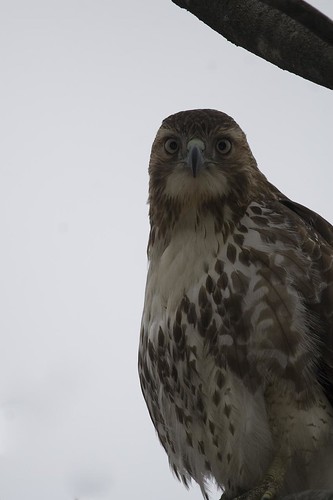
We returned and found the group that had gone to check the waterfall back at the parking lot, looking at a Fish Crow. We moved on to the Gore Estate, which was too snowy to walk around, although I took a quick run to the fenced-in field.
Pretty much out of accessible places, we went to drop the rest of the group off before heading home to count feeder birds for the rest of the day. On the way, we made a brief stop at Hardy Pond, which had surprisingly large numbers of Mallards considering that it was totally frozen.
Definitely a better day than I expected. Thanks to Judy, Joyce, Christine, Eric, Lew, Barbara, and my parents for helping.
